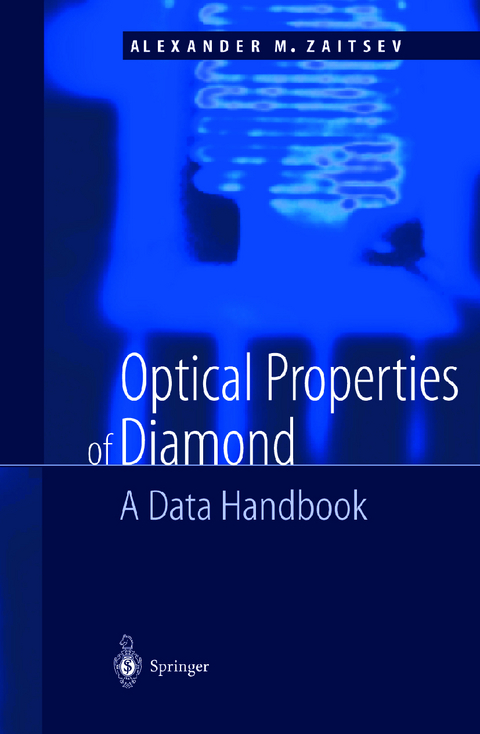
Optical Properties of Diamond
Springer Berlin (Verlag)
978-3-540-66582-3 (ISBN)
1 Refraction.- 2 Reflection and Transmission.- 3 Vibronic Absorption.- 4 Scattering.- 5 Optical Electronic Transitions.- 6 Coloration of Diamond.- 7 Physical Classification of Diamond.- 8 Interaction with Energetic Light Beams.- 9 Thermostimulated Luminescence and Tunnel Luminescence.- 10 Photoconductivity.- 11 Related Data.- Appendix: Abbreviations, Definitions and Methods.- References.
From the reviews of the first edition:
"The book presents in a systematical manner the experimental and theoretical data on optical properties of diamond accompanied by short explanations and models. ... It will help diamond researchers to find a reference or assess the level of knowledge of a particular optical feature. ... The main benefit derived from his handbook is a quick access to the most comprehensive information on all aspects of the optical properties of diamond." (HD Bruggemann, Optik, Vol. 114 (11), 2003)
"This handbook presents for the first time in English a multitude of data on the optics of diamond, which were previously published only in Russian. The author presents his own views alongside the options of other researchers." (Materials World, Vol. 9 (9), 2001)
| Erscheint lt. Verlag | 20.6.2001 |
|---|---|
| Zusatzinfo | XVIII, 502 p. |
| Verlagsort | Berlin |
| Sprache | englisch |
| Maße | 155 x 235 mm |
| Gewicht | 862 g |
| Themenwelt | Naturwissenschaften ► Chemie ► Analytische Chemie |
| Naturwissenschaften ► Physik / Astronomie ► Atom- / Kern- / Molekularphysik | |
| Naturwissenschaften ► Physik / Astronomie ► Festkörperphysik | |
| Schlagworte | Absorption • Diamant • Diamanten • Diamond • optical properties • Optics • Optische Eigenschaften • Transmission |
| ISBN-10 | 3-540-66582-X / 354066582X |
| ISBN-13 | 978-3-540-66582-3 / 9783540665823 |
| Zustand | Neuware |
| Haben Sie eine Frage zum Produkt? |
aus dem Bereich


